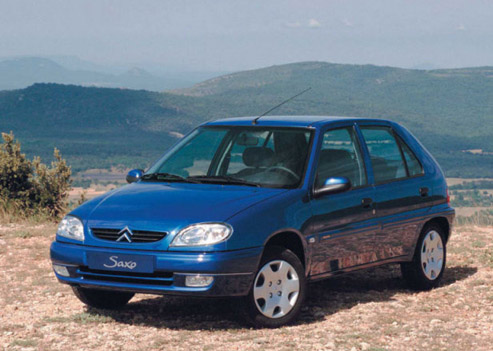 Citroens are famous for being refined, comfortable wheel suspensions. Saxo does not deviate from this rule. Both axles are equipped with independent wheel guidance systems. McPherson struts with triangular lower wishbones and stabilizer are used at the front. The rear suspension includes trailing wishbones, torsion bars, horizontally positioned shock absorbers and stabilizer. Even in tight, tight turns, there is no excessive inclination, road roughness damping is sufficient, and the influence of the load on the effectiveness of the suspension operation is imperceptible.
Citroens are famous for being refined, comfortable wheel suspensions. Saxo does not deviate from this rule. Both axles are equipped with independent wheel guidance systems. McPherson struts with triangular lower wishbones and stabilizer are used at the front. The rear suspension includes trailing wishbones, torsion bars, horizontally positioned shock absorbers and stabilizer. Even in tight, tight turns, there is no excessive inclination, road roughness damping is sufficient, and the influence of the load on the effectiveness of the suspension operation is imperceptible.
The Saxo uses the Hydroperfect power steering mechanism. The hydraulic pump of the system is disconnected from the car engine and driven by an electric motor interlocked with it.
As a result, the load on the drive unit was reduced, and the power steering system can operate at full intensity after turning the ignition key. The power steering performance is very high, constant and independent of the car speed, making, that managing a little Saxo is easy, a maneuvering in a parking lot, even with unpaved surfaces, no driver will be a problem. A very smooth steering system also has its drawbacks, which you notice when driving fast – Moving the steering wheel too easily can result in unintentional or too sharp turns of the car. You have to remember about it and get used to such work of the power steering system.
Gasoline engine with a capacity of driving the tested Saxo VTS 1361 cm3 was modernized, in order to adapt it to meet future emission standards of toxic exhaust components. Modernization included: changing the shape of the combustion chambers (engine capacity decreased after this treatment by 29 cm3), the way of bearing the rocker arms, tightening the selection of valve springs, changing the fit in the piston cylinder node, etc.. In effect, in addition to reducing the emission of poisonous exhaust components, lowering fuel consumption and lowering own friction, the modernized engine achieved a much lower noise and vibration level. The evaluation of the traction performance of the car with this engine is positive. Saxo VTS has good dynamics, manifested by the possibility of obtaining speed 100 km / h after 12,2 s, tackling inclines without shifting gears and easy overtaking, even in high-speed traffic on highways. It should be noted here, that the load of the car does not limit its traction in any way and does not significantly affect fuel consumption. Despite its good dynamics, the Saxo VTS is not a fuel-hungry dragon. Driving style largely determines fuel consumption in the city. Firmly depress the accelerator pedal, can be crossed 10 dm3na 100 km, and skilfully using the "short" stepped gearbox and keeping the engine speed below the maximum torque, to run 100 km in dense traffic we need 6,7 dm3 of gasoline. We can assume, that in city traffic, the car consumes on average approx. 8 dm3 of fuel per 100 km. On the road, there is a disproportion between offensive driving, and the smaller ones are -8.7-6.5dm3 / 100 km.
